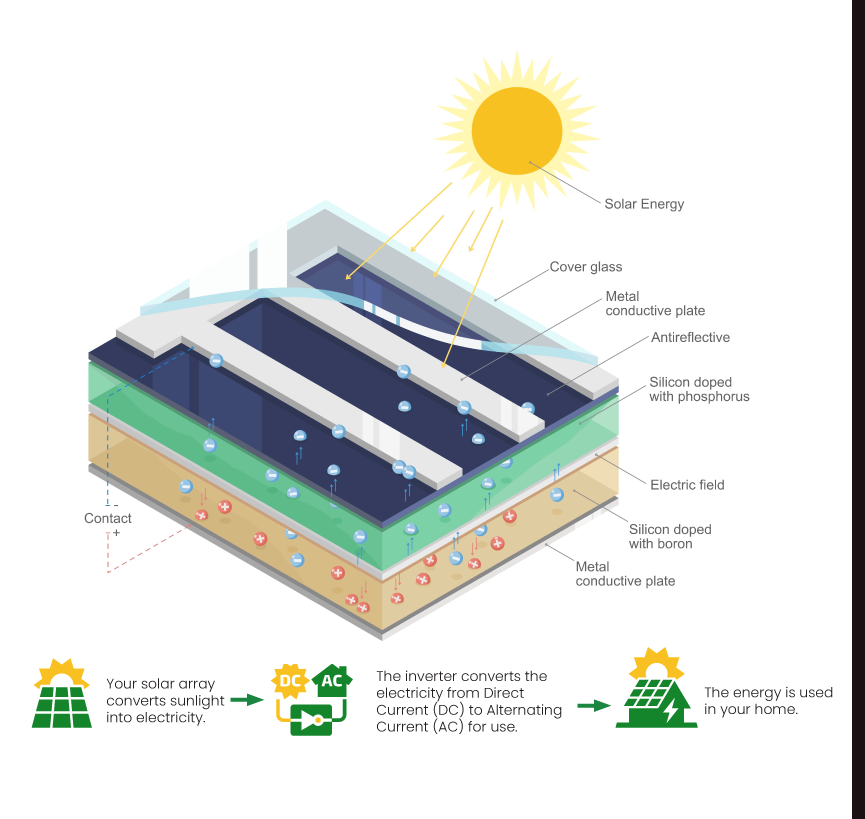Have you ever wondered about the actual science behind solar power and what goes into converting that abundant energy from the sun into the electricity that powers your home?
The topic might seem daunting, but today we’re here to break it down into digestible terms. No lab coat or electrical license required!
On a high level, solar panels work by creating an electric field that allows light particles (photons) to bump into electrons, freeing them from atoms and generating an electric current. This current flows through the metal contacts throughout the panel’s cells (the grid lines you see on your solar panel) to the inverters installed with your system, where it is converted from direct current to alternating current. From there, the flow continues to the grid and into your home.
So, how do solar panels create an electric field? An electric field occurs when opposite charges are separated, much like a magnetic field relies on opposite poles. To achieve this, solar panels are designed with slices of semiconducting material (meaning it is more conductive than an insulator, but less than a metal) that are specially treated to create one positive side and one negative side. This results in an electric field.

The current primary semiconductor used in solar panels is silicon, and it conducts electricity when energy is being provided by sunlight. After the blocks of crystalline silicon are cut into wafers and processed to separate the charges, they are combined with the metal contacts previously mentioned to enable the flow of the electrical current through the panel.
It’s important to note that the semiconductor used in building the panel plays a big role in determining the efficiency of a solar panel. For example, silicon can be used to create monocrystalline panels or polycrystalline panels. Monocrystalline panels use one crystal of silicon, while polycrystalline panels combine many crystals. Because monocrystalline panels allow electrons to move for freely, these panels are more efficient and generate more electricity. Polycrystalline panels are less expensive to manufacture but are notably less efficient, especially in heat. For more information on the differences between these panels, check out our page here about how solar works with the grid and your equipment options.
While the semiconductor is a primary factor in determining the efficiency of a solar panel, there are also other external factors that can contribute to how much electricity your panels produce. Temperature, shade, and dirt on your panels can all impact the production of your system. Because of this, it is important to work with an installer who is knowledgeable about your specific location and who designs a thought-out system that caters to your home layout and energy needs.
As a locally owned and operate company, Robco knows the demand put on Las Vegas solar systems. 50% of power usage in the valley occurs during the hottest 3 summer months of the year. Keeping this in mind, we install LG monocrystalline panels with a low temperature coefficient that ensures they perform well even on the hottest Las Vegas days.
And that’s the science behind solar power.
While having an in-depth understanding of the science behind solar power isn’t necessarily a requirement, we believe in providing as much information as we can to help you feel confident in your solar journey. And, if nothing else, at least you know you’ll sound smart at your next dinner party!
If you want to learn more about new solar PV cell research projects and the use of different semiconductor materials in solar cells, check out this article from the Office of Energy Efficiency & Renewable Energy.


